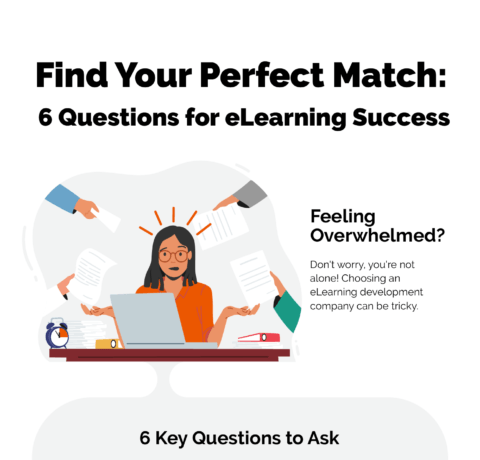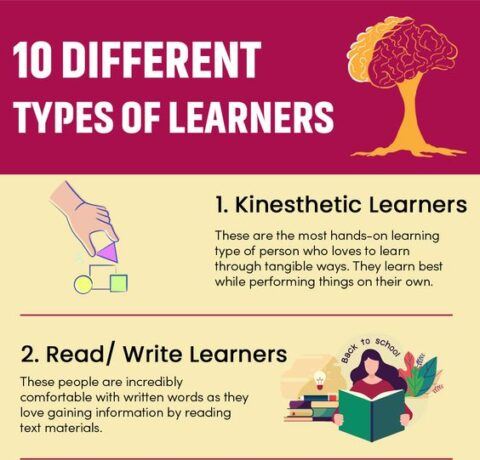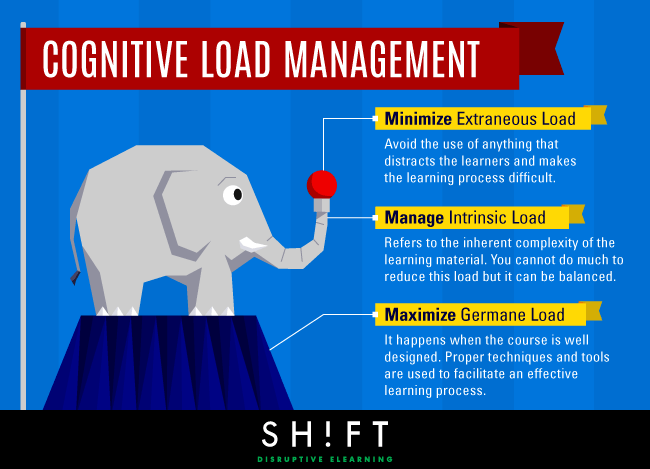Managing Cognitive Load in eLearning Infographic
The working memory plays a crucial role in helping us learn. But this part of the brain can only remember so much information or process a limited amount of data at any one time. So you have to design learning such that it optimizes the limited capacity of the working memory while delivering an engaging and effective learning experience.
The most effective way to maximize the performance of the working memory is to conserve its powers and direct these to process only the most critical pieces of information. You have to filter out the inessentials from the course and design the learning such that it is readily comprehended and assimilated to manage the cognitive load on the learners' brains. There are three types of cognitive load. Together they make up the total cognitive load. Your goal is to keep the total load within the grasp of the working memory. The Managing Cognitive Load in eLearning Infographic provides tips to help you manage cognitive load in your eLearning courses.
1. Extraneous Load:
Avoid anything that distracts the learners and makes it difficult for them to achieve the learning outcomes. A poor design, the use of distracting multimedia elements that taxes the processing capabilities of the learner, and the presence of irrelevant learning matter can increase the extraneous load of an eLearning course. Fortunately, you can keep this load under a tight rein.
2. Intrinsic Load:
This refers to the inherent complexity of the learning material. Intrinsic load is also determined by the prior learning or expertise level of the learner. You cannot do much with the learning material to reduce this load.
3. Germane Load:
You will want your course to be heavy with this load! Germane load is created when the course is designed and instructional matter is presented to facilitate effective learning.
At the end, the main idea is for you to reduce extraneous load to maximize the resources of working memory that are free to focus on germane activities.
View also:
- Maximizing the Working Memory in eLearning Infographic
- How Does the Brain Retain Information Infographic
- How To Use Brain Research For Effective eLearning Development Infographic
Read also:







You can adjust your cookie preferences here.